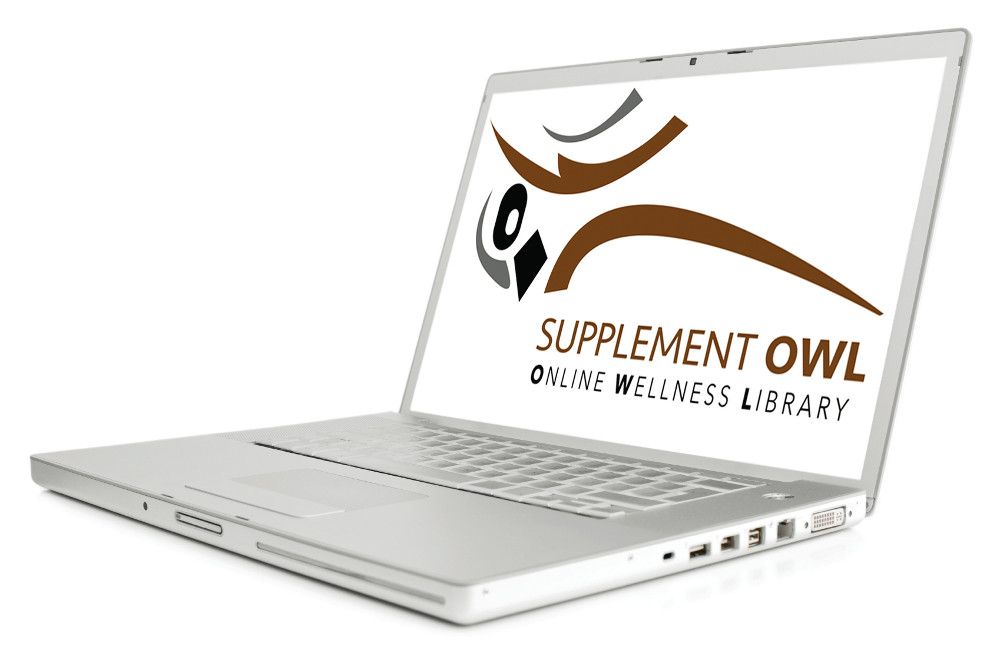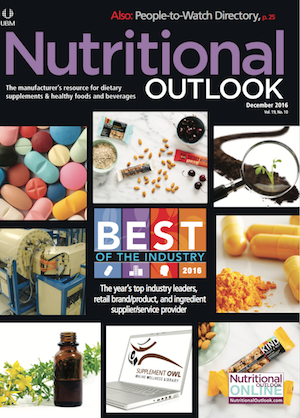Nutritional Outlook's 2016 Best of the Industry, Industry Leader: Council for Responsible Nutrition
The trade association is stepping up with a new tool to reset the conversation on industry transparency.
Logo from Council for Responsible Nutrition and photo from iStockphoto.com/LdF, Edited by Quinn Williams

No matter how you slice it, launching an initiative to improve the transparency of an entire industry is a tall order. But that’s exactly what the Council for Responsible Nutrition (CRN; Washington, DC) set out to do this year when it proposed, helped develop, and began beta testing the Supplement Online Wellness Library (OWL), an industry-wide, finished-product registry for dietary supplements.
CRN officially announced plans to create its new registry in April, partly in response to the barrage of negative media coverage that hit the industry in 2015. Since then, the trade association worked with Underwriters Laboratories (UL; Northbrook, IL) to build an online database that would be a “one-stop shop” where regulators and retailers can find the full label information-and, in some cases, even more info-of finished supplement products. Consumers will also be able to access the Supplement OWL, although they are not its primary intended audience at this point.
Steve Mister, president and CEO of CRN, tells Nutritional Outlook that while there were already ways for consumers and retailers to locate supplement label information piecemeal, the OWL is meant to help industry move forward on the “continuum” of transparency by putting all of that information in one easily navigable resource. And while FDA has other tools to inform its enforcement actions, the new registry will hopefully make the agency’s work easier too.
“To the extent that we hear FDA saying it doesn’t know which manufacturers use which ingredients at which levels, this is a way to take that argument off the table and say, ‘Well, now you do,’” Mister says. For instance, if FDA had particular concerns about magnesium, it could easily search for all the products in the registry containing magnesium. Mister adds that the agency has indicated to CRN that it already sees the OWL “as a very favorable move.”
Still, the question remains of how many supplement manufacturers will actually use the new registry. CRN member companies will be required to upload their labels to the OWL, but what incentive does the rest of the industry have to participate? It largely hinges on pressure from retailers. If major supplement retailers begin to view participation in the OWL as a factor in store placement, a large swath of the industry would be motivated to participate. CRN is optimistic retailers will get on board in this spirit, Mister says.
But even if the OWL isn’t widely used by the majority of supplement manufacturers, it could still be “a tool in FDA’s own risk management,” Mister explains. For one, the companies that upload their labels to the registry will probably be those more likely to be in compliance with industry regulations. “So if you’re FDA, and you’re seeing some companies in the registry and then you know there are others that are not, maybe that helps direct where your attentions are,” Mister says. For a fee, the OWL also offers companies the option of easily displaying other background documentation, such as GMP certifications, which FDA could use to prioritize where facility inspections are most needed-and where they are not.
Beta testing of the OWL is already well underway, and the site will go live once enough labels from finished-product manufacturers and marketers are in the system-hopefully in the first few months of 2017. Meanwhile, CRN will also be rolling out a marketing campaign to ensure retailers, manufacturers, and media outlets are aware of the registry and its potential to take industry transparency soaring to new heights.
“We spent 2016 developing a product that works,” Mister says. “2017 will be the year that we really start to promote it, first to industry, and then outside the industry.” The OWL may be less than a year into development, but already industry hopes are high that it will help regulators better distinguish between responsible and irresponsible firms, perhaps while also silencing criticisms that the industry is not transparent enough.
Other 2016 winners:
Nutritional Outlook's 2016 Best of the Industry, Industry Leader: Botanical Adulterants Program
Nutritional Outlook's 2016 Best of the Industry, Ingredient Supplier/Service Provider: Sabinsa Corp.
Nutritional Outlook's 2016 Best of the Industry, Retail Brand/Product: KIND
Also read:
CRN Offers First Glimpse of Supplement Online Wellness Library (OWL)
Congressional Leaders, Supplement Industry Executives Meet at 2016 Day on the Hill

Prinova acquires Aplinova to further increase its footprint in Latin America
April 7th 2025Prinova has recently announced the acquisition of Brazilian ingredients distributor Aplinova, which is a provider of specialty ingredients for a range of market segments that include food, beverage, supplements, and personal care.






















